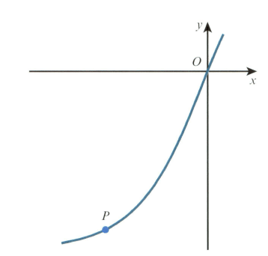Sue Pemberton, Julianne Hughes and, Julian Gilbey Solutions for Chapter: Cross-Topic Review Exercise 2, Exercise 1: CROSS-TOPIC REVIEW EXERCISE 2
Sue Pemberton Mathematics Solutions for Exercise - Sue Pemberton, Julianne Hughes and, Julian Gilbey Solutions for Chapter: Cross-Topic Review Exercise 2, Exercise 1: CROSS-TOPIC REVIEW EXERCISE 2
Attempt the free practice questions on Chapter 15: Cross-Topic Review Exercise 2, Exercise 1: CROSS-TOPIC REVIEW EXERCISE 2 with hints and solutions to strengthen your understanding. Cambridge International AS & A Level Mathematics : Pure Mathematics 2 & 3 Course Book solutions are prepared by Experienced Embibe Experts.
Questions from Sue Pemberton, Julianne Hughes and, Julian Gilbey Solutions for Chapter: Cross-Topic Review Exercise 2, Exercise 1: CROSS-TOPIC REVIEW EXERCISE 2 with Hints & Solutions
Use the trapezium rule with two intervals to estimate the value of , giving your answer correct to decimal places.

The diagram shows part of the curve with parametric equations
At the point on the curve, the value of the parameter is . It is given that the gradient of the curve at is .
Show that
By first using an iterative formula , determine the coordinates of the point . Give the result of each iteration to decimal places and each coordinate of correct to decimal places. [Use ]
Prove the identity . Hence, find the exact value of .
By first expanding , show that . Hence, show that .

The diagram shows the curve for . The stationary points are labelled as shown.
It is given that the -coordinate of is greater than . Find the least possible value of .
The equation of a curve is . At the point on the curve with positive -coordinate , the gradient of the curve is
Show that .
The equation of a curve is . At the point on the curve with positive -coordinate , the gradient of the curve is
Show that .
Use an iterative formula to find the value of correct to significant figures. Give the result of each iteration to significant figures.
By differentiating , show that if then . Hence, show that , giving the values of and .
